Elimination of Mother-to-Child Transmission Publications
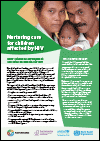
Over the last three decades, scientific findings from a range of disciplines have converged. They prove that in the early years, we lay down critical elements for health, well-being and productivity, which last throughout childhood, adolescence and adulthood. Failure to meet a child’s needs during this critical period limits the child’s ability to achieve their full developmental potential and threatens the future of human capital and society in general.
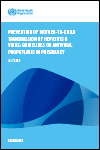
WHO estimates that in 2015, 257 million people were living with chronic hepatitis B virus (HBV) infection worldwide, and that 900 000 had died from HBV infection, mostly as a result of cirrhosis or hepatocellular carcinoma. Most HBV-associated deaths among adults are secondary to infections acquired at birth or in the first five years of life.
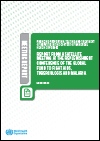
A side event was held at the 2019 conference for the replenishment of the Global Fund to Fight AIDS, Tuberculosis and Malaria in October 2019 to consider the effective use of global health resources. The meeting underscored the potential public health impact of expanding viral hepatitis elimination programming through strategic integration, including integration with existing efforts to eliminate AIDS and TB.
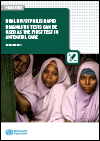
WHO recommends that pregnant women receive testing for HIV, syphilis and hepatitis B (HBSAg) at least once during pregnancy, preferably in the first trimester.
Dual HIV/syphilis rapid diagnostic tests (RDTs) can be used as the first test for pregnant women as part of antenatal care (ANC).
These simple tests can be used at the point-of-care and are cost-saving compared to standard testing in ANC. They enable more women to be diagnosed with HIV and syphilis so that they can access treatment and prevent transmission to their children.

Under Universal Health Coverage, all people should have access to quality health services that meet their needs without incurring financial hardship. Rapid economic development in the Western Pacific Region has been accompanied by a decrease in external funding for prevention and control programmes for HIV, viral hepatitis and sexually transmitted infections (STIs), requiring transition to domestic funding for health. This document introduces approaches to health financing, summarises key user fee and service coverage indicators.
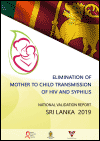
Sixteen women living with HIV and 36 women with syphilis delivered during 2018. All pregnant women with HIV received treatment following national protocols, and the new-borns remain free of infection. Among pregnant women with syphilis, 97% received treatment and annual rate of congenital syphilis was 1.5 per 100 000 live births. Process indicators have improved with 97.5% in 2017 and 96.4% in 2018 for coverage of ANC attendance. These figures have been achieved through the government services.
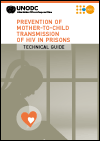
The rise in the global female prison population, women’s unique vulnerabilities to HIV infection and insufficient provision and inequitable access to HIV services places the prevention of motherto-child transmission (PMTCT) in prisons high on the agenda of HIV prevention among key populations.
This technical guide is intended to support countries in their efforts to increase their capacity to eliminate mother-to-child transmission of HIV in prison, and achieve the ultimate goal of ending AIDS as a public health threat by 2030, “leaving no one behind”.
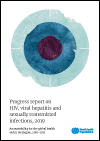
WHO is accountable for reporting back to the World Health Assembly on progress in implementing the Global health sector strategies on HIV, viral hepatitis and sexually transmitted infections based on data received from countries. This report assesses the mid-term progress in 2019 in implementing these global health sector strategies from 2016 to 2021.
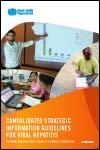
The Consolidated strategic information guidelines for viral hepatitis summarize and simplify the overall approach proposed by WHO to collect, analyse, disseminate and use strategic information on viral hepatitis at local, subnational, national and international levels.
The document describes the use of strategic information at various stages of the response in the context of strengthening broader health information systems. Strategic information can be defined as data collected at all service delivery and administrative levels to inform policy and programme decisions.






